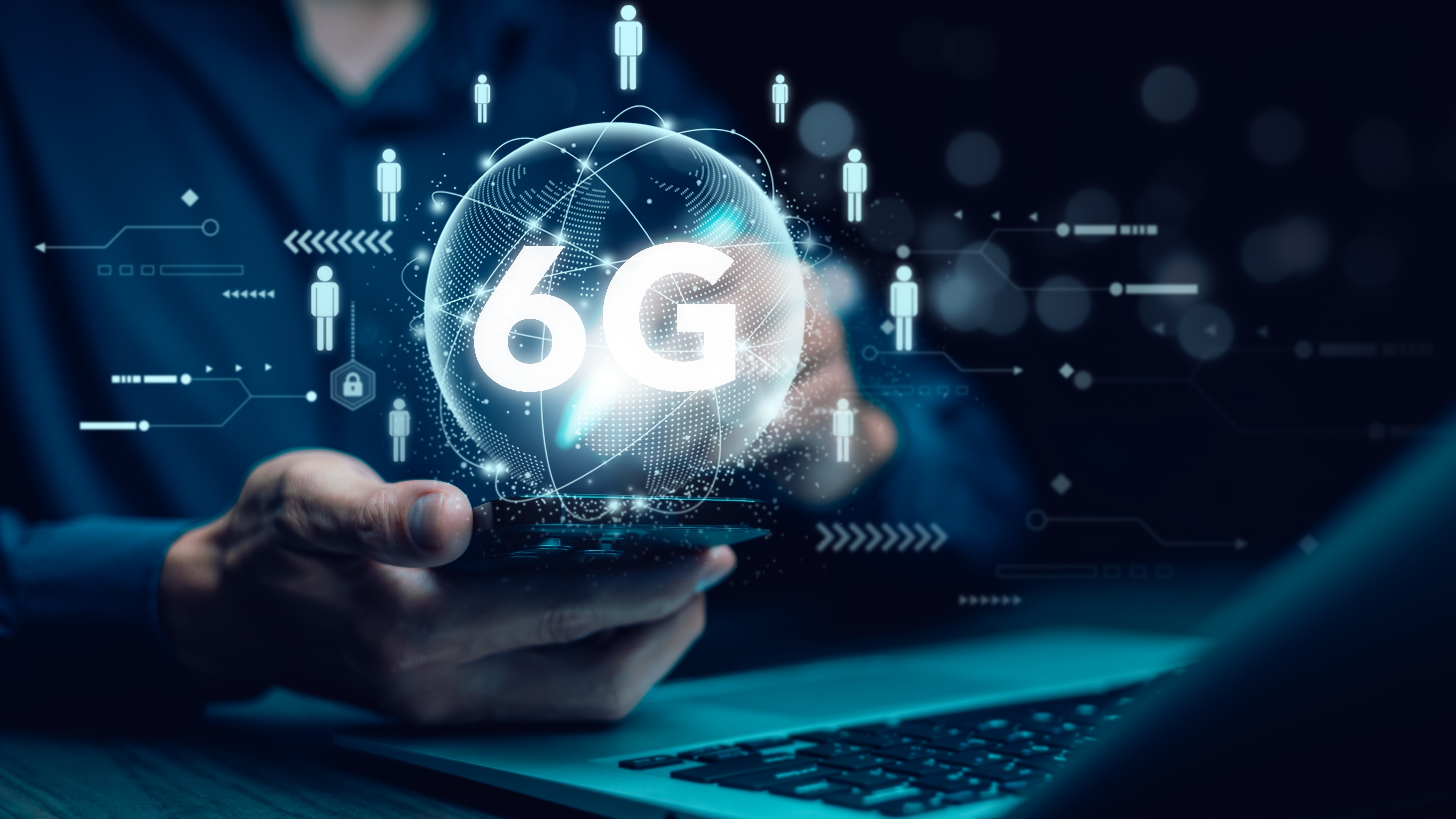6G tests reach a blisteringly quick 938 Gb/s transmission rate, 5000X faster than 5G
By comparison, existing 5G networks operate in the hundreds of Mb/s

6G is shaping up to be one of the largest jumps in network bandwidth in mobile service providers' history. Interesting Engineering reports that researchers have successfully created a 6G network that achieved a 938 Gbps transmission data rate.
For perspective, 938 Gbps is almost 5000 times faster than a good to excellent 5G connection on your typical 5G smartphone, which can operate at roughly 200 Mbps. It's even faster when you consider real-world 5G connections that don't have the best signal, which will generally provide well below 100 Mbps.
This impressive feat was accomplished by Zhixin Liu and his team at University College London (UCL). The team purportedly used a combination of radio waves and light-based communication across the broadest spectrum of frequencies ever recorded, ranging from 5 GHz to 150 GHz.
The researchers used a 145 GHz bandwidth wireless transmission using orthogonal frequency-division multiplexing (OFDM) for the test. This setup takes advantage of different transmission operations for various frequency ranges. The high-frequency mm-wave bands, including the 75 - 150 GHz bands, were generated by "mixing optically modulated signals with frequency-locked lasers on high-speed photodiodes."
"By frequency-locking two pairs of narrow linewidth lasers and referring to a common quartz oscillator, the researchers generated W-band and D-band signals with stable carrier frequency and reduced phase noise compared to free-running lasers, maximizing the use of spectrum.
By using OFDM format and bit loading, the researchers achieved a 938 Gbps transmission data rate with less than a 300 MHz gap between different RF and mm-wave bands."
Liu and his team purportedly talk with smartphone manufacturers and network providers about the technology they are developing. Specifically, the team's development aims to solve the 100 Gbps requirement of next-generation 6G base stations for communication between access points and hubs.
Stay On the Cutting Edge: Get the Tom's Hardware Newsletter
Get Tom's Hardware's best news and in-depth reviews, straight to your inbox.

Aaron Klotz is a contributing writer for Tom’s Hardware, covering news related to computer hardware such as CPUs, and graphics cards.
-
das_stig I bet all the comms kit manufacturers are looking forward to the hardware refresh profits and mobile service suppliers are wetting themselves at the thought of taking customers from your traditional ISP if 6G takes off with those types of speeds for cable free consumer connections and of course the prices they can charge.Reply -
bill001g What some research paper says means little when the mobile providers will just put a sticker that says 6G on their current products and pretend it is something new. This is exactly what they did with 5G. What was actually 5G was mostly meant to be a fixed solution to the home. There were a handful a sites deployed getting close to 15 years ago. You saw lots of test of gigabit speed in say new york city. The problem was the frequencies used were too high to penetrate the walls of houses so you needed outdoor antenna and they did not go very far. Never really went anywhere until the vendors renamed what had been called LTE advanced 5G. It is a fairly small upgrade over what had been called 4G-LTE. This is nothing new it took quite a while for the end cosumer to learn that 4G and 4G-LTE where very different since they did the same renaming trick on the 3G stuff.Reply -
Syntaximus I'll believe it when I see it, 5G has been a complete sham in my experience (AT&T).Reply
4G LTE is often faster and takes less of a hit on battery as well. -
jp7189 Direct line of sight lasers. This can only be used for fixed backhaul connections, not for consumer handhetsReply -
bill001g Reply
It doesn't use the laser directly it uses the laser to generate very precise radio signals. In some ways it might be better to use the lasers.jp7189 said:Direct line of sight lasers. This can only be used for fixed backhaul connections, not for consumer handhets
It is going to be much worse than the 40ghz verizon 5G systems which have extremely short range and no ability to pass through the walls of houses. They are talking about 150ghz which is going to be much worse. A foggy day will block most the signal. No way this is going to work with portable devices.